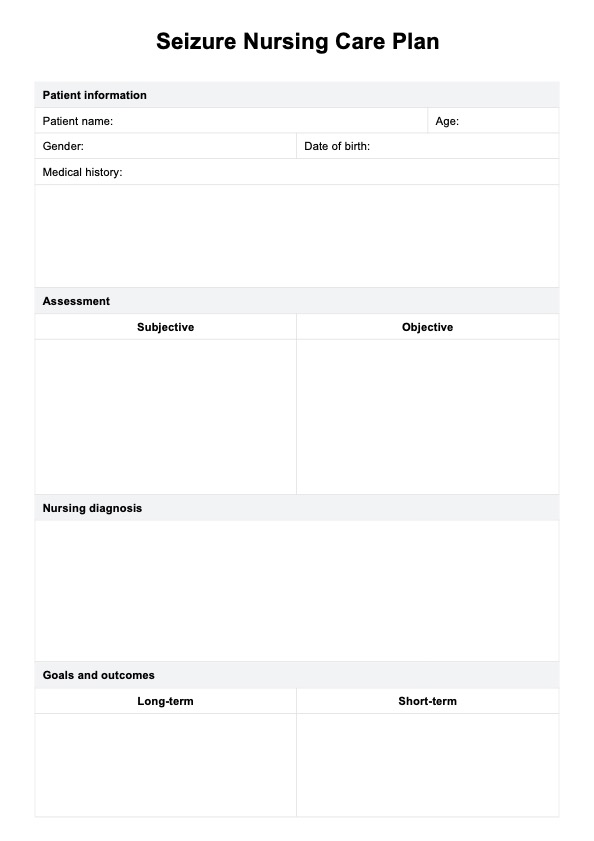A comprehensive plan of care for seizures should include a detailed medical history, a record of the types and frequency of seizures experienced, triggers, and the specific medications prescribed, along with their dosages. It is also crucial to outline emergency procedures, such as how to respond during a seizure and when to seek medical help.

Seizures Nursing Care Plan
Optimize your patient care with our Seizures Nursing Care Plan template. Streamline documentation, enhance safety, and improve outcomes efficiently.
Seizures Nursing Care Plan Template
Commonly asked questions
Writing an epilepsy care plan involves gathering essential information about the individual's condition, including their seizure history, diagnosis, and treatment options. The plan should clearly outline the roles and responsibilities of caregivers and specific interventions for managing seizures.
Creating a seizure plan requires a systematic approach that begins with identifying the person's unique seizure triggers and patterns. The plan should outline preemptive measures to minimize risks, such as avoiding certain activities during high-risk times. It should also detail the steps to take during a seizure, including how to keep the individual safe and when to call for emergency help.
EHR and practice management software
Get started for free
*No credit card required
Free
$0/usd
Unlimited clients
Telehealth
1GB of storage
Client portal text
Automated billing and online payments











